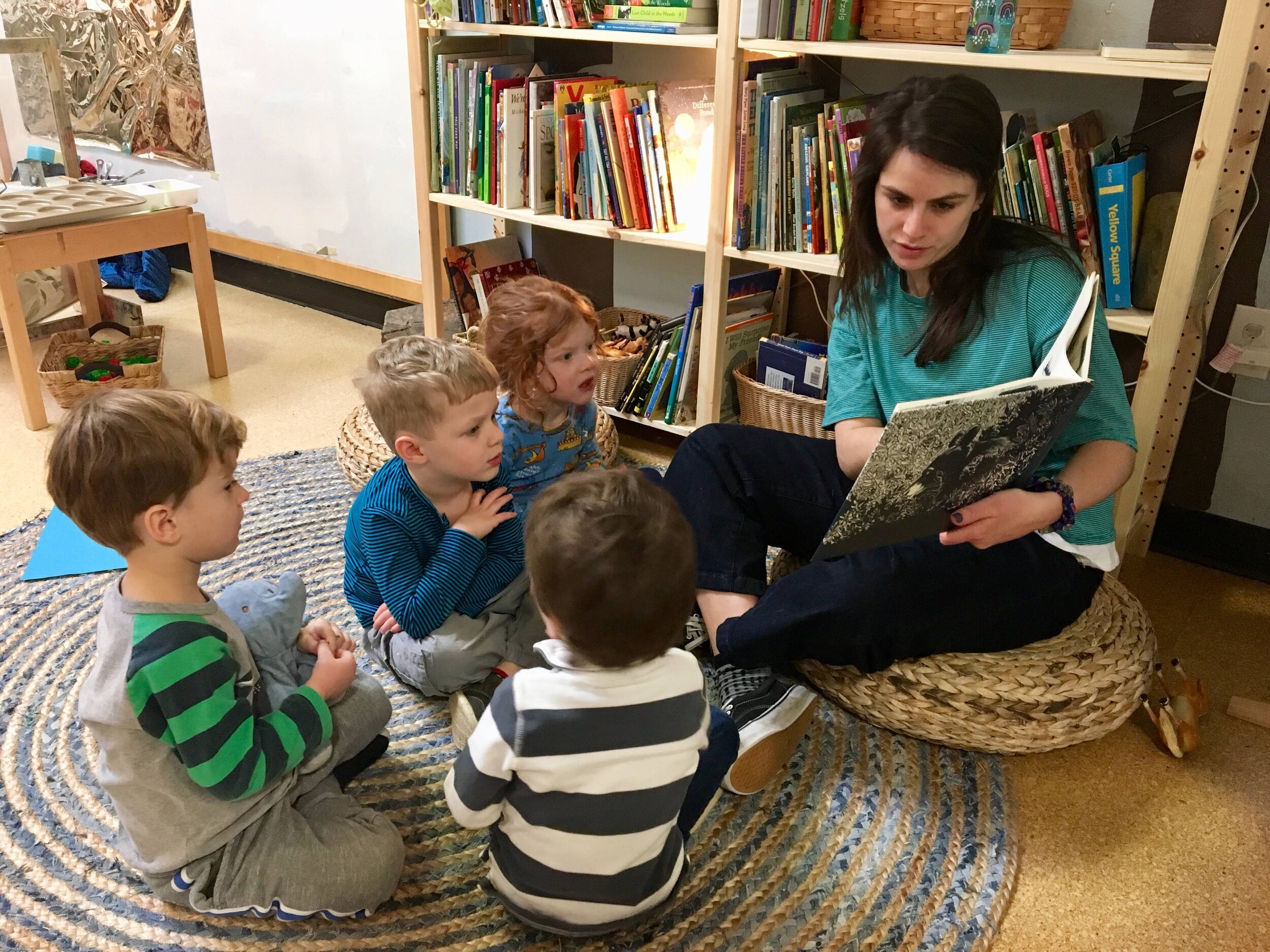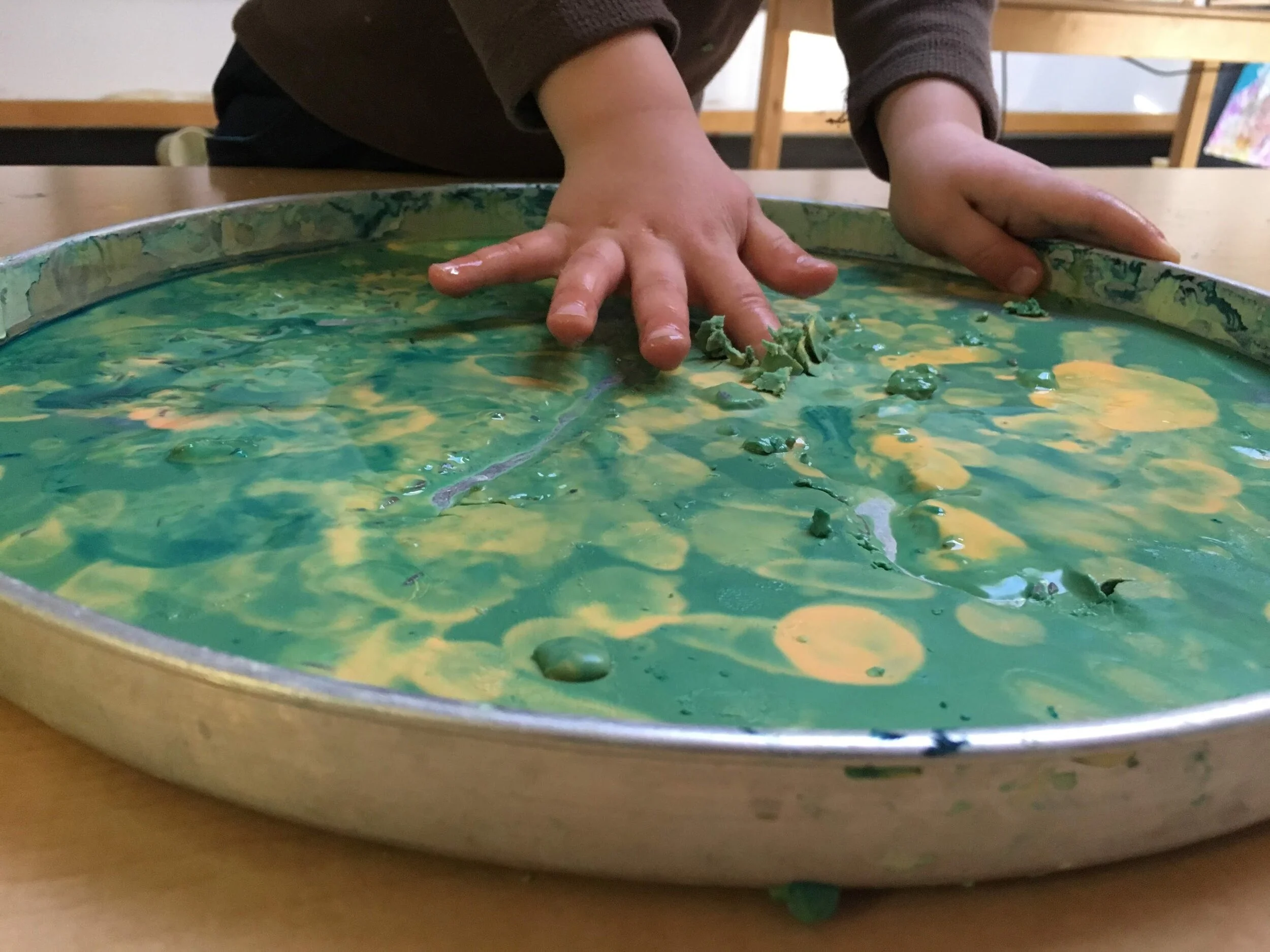A DAY IN THE LIFE...
MORNING ARRIVAL
To ease the transition from home to school, we work with families to create a warm and consistent routine that children can depend on. Upon arrival, children are welcomed into their classroom and are encouraged to hang up their belongings in their cubbies, change into their indoor shoes, and wash hands before they begin their day. As they prepare to say goodbye to their caregivers, children greet friends and make their own play choices to start the morning. Early math and literacy is incorporated into arrival activities, such as a question of the day, a sign-in chart to see which friends have arrived, a counting game, or an estimation jar.
Provocations AND OPEN ENDED PLAY
Children begin their day by engaging in a variety of evolving provocations, carefully curated by their teachers to introduce or expand upon new concepts and experiences. Morning activities are designed to provide inquiry and experimentation, and focus on math, science, literacy, and/or sensory based art. Examples might include a station setup to magnify leaves, loose parts, mirrors to observe symmetry and pattern, or a station examining, counting and sorting rocks and natural materials. Teachers engage and observe, making note of the children's interactions and discoveries.
GROUP MEETINGS
Children and teachers gather in small and large groups organically throughout the day to discuss and contrast ideas, to make plans, and to share knowledge and experiences. Group meetings provide an opportunity to research and find information in books, maps, and other printed materials, to celebrate through music and movement and to storytelling or read books together.
Outdoor LEARNING AND ACTIVE PLAY
Spending time in nature and having the opportunity to move freely is an important and cherished part of our daily routine, in all types of weather conditions. A growing body of research supports the importance of ample outside time for young children. The hills, trees, and playgrounds of the Southwest Corridor provide endless opportunities for running, hiding, climbing, rolling, water play, and other games and activities, structured or not, that get their hearts and bodies moving.
Additionally, Stony Brook School collaborates to use and help maintain the Egleston Community Orchard, a local public garden space in our neighborhood. The garden is filled with herbs, raspberry bushes, milk weed, and the worms, snails, and butterflies that live there!
During warmer months, we will increase our time outside, creating an outdoor classroom experience, by moving our snack time outside and bringing materials for art, sensory, reading and natural explorations. In case of inclement weather, obstacle courses, yoga, rainbow scarf dance parties, etc. will be set up in our classrooms.
Snack and Mealtime
Snack and lunch times are centering opportunities within our day, as children come together as a community. During this time we lower our lights and play soft music, to create a calm environment that invites mindful eating. We also see this as a time to engage in conversation and share stories about our day or life experiences. Mealtime brings us the chance to make observations and connections to the foods that the children are eating, presenting an opportunity to learn about healthy food choices, nourishment, where food comes from, and what variations of foods we might experience from family to family, depending on our cultures. It is also a time to practice care for oneself and others, as children are encouraged to learn how to open and close their lunch bags and containers, dispose of or recycle trash, and help with the rash of cleaning up and assembling their belongings. They learn and practice hand washing skills as a daily part of their mealtime routine.
We are a peanut and tree nut free space, and are diligent about working with parents to advocate for children with different dietary needs and choices.
Songs and storytelling
Singing, reading, listening, and storytelling, are important threads throughout our day as these activities help children transition from area to area, to understand new concepts, to connect ideas, and to express what they are thinking about. Songs and stories introduce basic literacy concepts, and also help us explore topics like feelings, differences and similarities, nature and seasons, and taking care of ourselves and each other. Storytelling, whether through paint, drawing, puppets, acting, play or conversation, allows us put into practice social-emotional skills of communication, sharing, collaboration, empathy, self confidence, and considering different perspectives. We intentionally curate our library of books and music to offer a diverse representation of cultures, racial identities, genders, family constructs, and actively seek to include BIPOC musicians, authors and illustrators.
Planning AND IDEA SHARING
Planning and idea sharing can happen as a full group, smaller group, or with individuals, as teachers work with children to create curriculum based upon their interests. Collaboratively, they work together to revisit their observations, questions, hypotheses, and consider artistic, scientific, or creative avenues to learn more. Teachers often introduce materials, language or concepts that children may use to further their inquiries.











